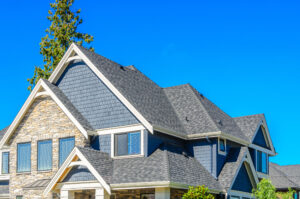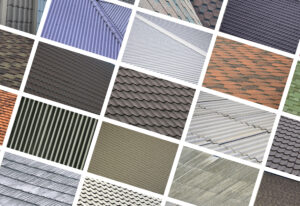Is Your Roof Due For an Upgrade? 7 Improvements to Make When Replacing Your Roof

Did you know that the average asphalt shingle roof lasts around 20-30 years before it needs to be replaced? If your roof is approaching or has surpassed this age, it may be time to start planning for a roof replacement. But replacing your roof isn’t just about swapping out old shingles for new ones – it’s also an opportunity to make upgrades that can improve your home’s energy efficiency, durability, and curb appeal. In this article, we’ll explore 7 upgrades you should consider when replacing your roof.
Why Upgrade Your Roof?
Before we dive into the specific upgrades, let’s talk about why you might want to go beyond a basic roof replacement. Here are a few key benefits of upgrading your roof:
- Improved energy efficiency: Certain roofing materials and features can help keep your home cooler in the summer and warmer in the winter, reducing your energy bills.
- Enhanced durability: Upgrading to higher-quality materials or adding protective features can help your roof last longer and withstand harsh weather conditions.
- Increased home value: A new, upgraded roof can be a major selling point if you decide to put your home on the market.
- Better curb appeal: An attractive, modern roof can greatly enhance the overall look of your home.
Now, let’s explore the 7 upgrades you should consider when replacing your roof:

1. Choose High-Quality Shingles
One of the most important decisions you’ll make when replacing your roof is what type of shingles to use. While traditional 3-tab asphalt shingles are the most affordable option, upgrading to higher-quality architectural or laminate shingles can provide several benefits:
- Longer lifespan (up to 50 years in some cases)
- Better resistance to wind, hail, and other weather damage
- Appealing, dimensional look
- Potential for energy efficiency (some shingles are designed to reflect sunlight)
When choosing your shingles, look for a reputable brand with a strong warranty. Also, consider the color and style of the shingles and how they will complement your home’s overall aesthetic.
2. Upgrade Your Underlayment
The underlayment is the layer of material that lies between your roof deck and your shingles. While traditional felt underlayment gets the job done, upgrading to a synthetic underlayment can provide extra protection against leaks, wind, and moisture damage. Synthetic underlayments are typically lighter, stronger, and more tear-resistant than felt.
Another option is to add an ice and water shield along your roof’s eaves and valleys. This self-adhering membrane helps prevent ice dams and wind-driven rain from causing leaks in these vulnerable areas.
3. Add Proper Ventilation
Proper roof ventilation is essential for regulating your attic’s temperature and moisture levels. Without adequate ventilation, heat and humidity can build up in your attic, leading to issues like ice dams, mold growth, and premature aging of your roofing materials.
When replacing your roof, make sure your contractor assesses your ventilation and makes any necessary improvements. This may involve adding or enlarging soffit vents, ridge vents, or gable vents to ensure proper airflow. A well-ventilated attic can help extend the life of your new roof and prevent costly issues down the line.

4. Invest in Better Flashing
Flashing is the thin metal material used to seal and waterproof areas where your roof meets chimneys, walls, or other protrusions. Old, corroded, or improperly installed flashing is a common source of roof leaks.
When replacing your roof, upgrade to high-quality, corrosion-resistant flashing materials like copper or stainless steel. Make sure your contractor takes the time to properly install the flashing and seal it with rubberized asphalt for an extra layer of leak protection.
5. Consider Cool Roofing
If you live in a hot climate, you may want to consider “cool roofing” options that can help reflect sunlight and reduce heat absorption. Some cool roofing upgrades to consider:
- Light-colored shingles that reflect more sunlight than dark shingles
- Special reflective coatings that can be applied to your new roof
- Metal roofing, which naturally reflects heat and can be painted with reflective pigments
Cool roofing can help keep your home cooler in the summer, reducing your air conditioning costs. It can also help extend the life of your roofing materials by reducing thermal expansion and contraction.
6. Go Green with Eco-Friendly Materials
If you’re environmentally conscious, consider upgrading to eco-friendly roofing materials. Some options include:
- Recycled content shingles made from reclaimed materials like rubber, plastic, or wood fiber
- Clay or concrete tiles, which are highly durable and can be recycled at the end of their lifespan
- Wood shakes sourced from sustainable forests
- Living green roofs topped with soil and vegetation
In addition to being better for the planet, eco-friendly roofing materials can provide benefits like improved insulation, reduced urban heat island effect, and better stormwater management.
7. Add Aesthetic Upgrades
Finally, don’t forget the aesthetic upgrades that can take your roof from functional to fabulous. Some options to consider:
- Decorative architectural shingles that mimic the look of slate, wood, or tile
- Copper accents on dormers or bay windows
- A cupola or weathervane to add visual interest
- Skylights to bring natural light into your home
While aesthetic upgrades won’t necessarily improve your roof’s performance, they can greatly enhance your home’s curb appeal and make it stand out in the neighborhood.
FAQ About Roof Upgrades
Q: How much do roof upgrades typically cost?
A: The cost of roof upgrades can vary significantly depending on the type of upgrade, materials used, and the size of your roof. Some upgrades, like improved ventilation or flashing, may only add a few hundred dollars to the overall cost, while others, like adding a skylight or cool roofing materials, can be more expensive. It’s essential to discuss your budget and priorities with a reputable roofing contractor to determine the best upgrades for your home and budget.
Q: Will roof upgrades increase the value of my home?
A: Yes, many roof upgrades can potentially increase the value of your home. Energy-efficient upgrades, such as cool roofing materials and improved insulation, can make your home more attractive to buyers and potentially command a higher sale price. Aesthetic upgrades, like adding a skylight, can also enhance your home’s curb appeal and desirability.
Q: How long do roof upgrades typically last?
A: The longevity of roof upgrades can vary depending on the materials used and the quality of installation. For example, high-quality flashing materials like aluminum or stainless steel can last for decades, while cool roofing materials may have a shorter lifespan but can be reapplied or replaced as needed. Following manufacturer recommendations and maintaining your roof properly is essential to ensure the upgrades last as long as possible.
The Bottom Line on Roof Upgrades
Replacing your roof is a significant investment, but one that pays off in the long run. By considering these seven strategic upgrades, you can protect your home and enhance its comfort, style, and efficiency.
From fortified flashing to energy-saving insulation, these improvements will help your new roof reach its full potential. So when the time comes to replace your roof, think beyond the shingles and elevate your home to new heights with these must-have upgrades.
Additional Roofing Resources
- Top Causes for Brown Spots on Your Ceiling
- Guide to Year Shingle Differences
- Tile Roofing: Advantages and Drawbacks

Anna has over six years of experience in the home services and journalism industries and serves as the Content Manager at MyHomePros.com, specializing in making complex home improvement topics like HVAC, roofing, and plumbing accessible to all. With a bachelor’s degree in journalism from Auburn University, she excels in crafting localized, comprehensive guides that cater to homeowners’ unique needs. Living on both coasts of the United States has equipped her with a distinctive perspective, fueling her passion for turning any house into a cherished home through informed, personalized decision-making.








